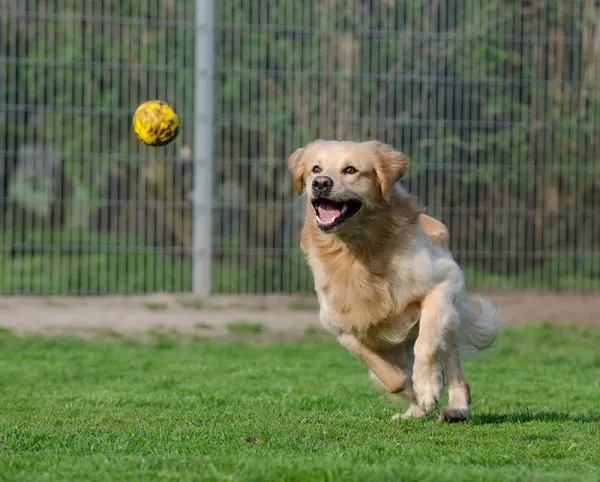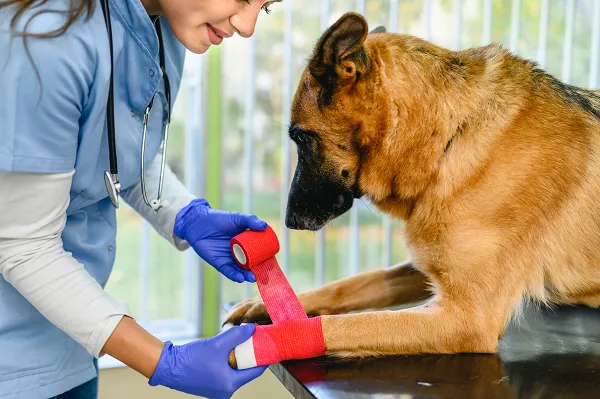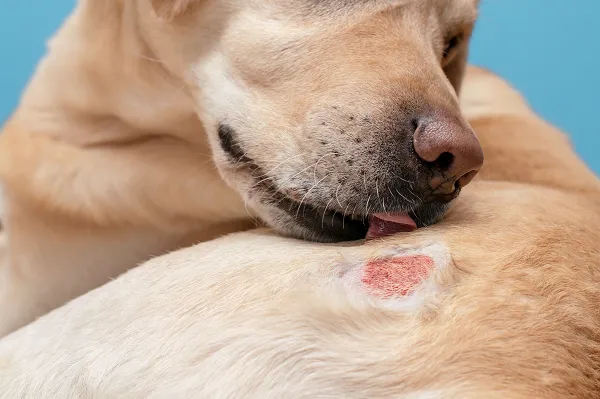Breeding for Dog Owners – Caring for Mother and Puppies After Weaning

Having a litter of puppies is an exciting event, but not without its responsibilities. At appropriate ages, puppies should be dewormed and start their vaccine series. They can start making their way to new homes by eight to ten weeks of age.
Body Condition Scores

Body condition scoring is an effective objective method of determining if a pet is at a healthy weight. There are 2 scoring systems: one out of 5 and the other out of 9. This handout outlines how to body condition score pets and recommends tracking body condition score to keep pets at a healthy weight, an important factor in pets living longer with less health complications.
Boarding Your Dog

When traveling, you may need to board your pet at a kennel or veterinary clinic if friends, neighbors, or pet sitters are not an option. Ask for references to find a boarding facility and be sure to visit it before agreeing to have your pet stay there. A short stay before a longer trip can help your pet to settle in more easily. Be sure to leave emergency contact info for you and your veterinarian with the boarding facility.
Birth Control for Dogs

Depending on the size and breed of the dog, heats (estrus) can begin as early as four months old and can occur as frequently as every four months. Spaying a dog either through ovariohysterectomy or ovariectomy is the most effective way to prevent pregnancy. Spaying also negates false pregnancies and pyometra and reduces the risk of mammary cancer. Drugs that regulate the heat cycle are not approved for use in the US or Canada.
Bandage and Splint Care for Dogs

Bandages and splints protect an injured or wounded area of the body. It is important to closely monitor your dog’s bandage or splint to ensure it does not slip or become wet or soiled and to ensure there is no discharge or foul odors indicating infection. This handout explains optimal bandage and splint care for your dog at home as well as possible complications that will require veterinary attention.
Applying Ointments, Creams, and Lotions on Dogs

Applying topical medications to your pet can be a challenge. Ointments, creams, and lotions are for external use only. It is important to prevent your dog from licking and swallowing any of these external preparations as they may contain ingredients that could be harmful if swallowed. If you find it difficult to prevent your pet from licking the medication, contact your veterinarian to have them fitted for an Elizabethan collar.
Applying Eye Ointments to Dogs

Applying eye ointments to your dog’s eye(s) can be a challenging or easy task. The proper administration of eye medications is essential for your dog’s prompt recovery. It is important to use the medication as directed for the full duration and contact your veterinarian if you have problems. The tips and instructions in this handout may make administering your dog’s eye ointment easier.
Applying Ear Drops to Dogs

Topical ear medications are necessary for the treatment of most ear conditions in dogs. This article provides step-by-step instructions on how to apply ear medications along with precautions. Tips are also given to reduce your dog’s anxiety with ear treatment.
Acetaminophen (Tylenol) Poisoning Alert for Dogs and Cats

Acetaminophen (Tylenol, Paracetamol, APAP, N-acetyl-p-aminophenol) is a pain relief and fever-reducing medicine people use for many types of pain. Acetaminophen is available in many forms including tablets, capsules, gel caps, melt away tablets, rectal suppositories, and liquids. Acetaminophen is often found in homes with pets. Poisoning may happen when pets get into the owner’s medications.
Airplane Travel With Your Dog

This handout discusses preparing to travel by airplane with your dog. This includes planning your flight, ensuring you are following import regulations for your country of destination, and what to do when your arrive.

